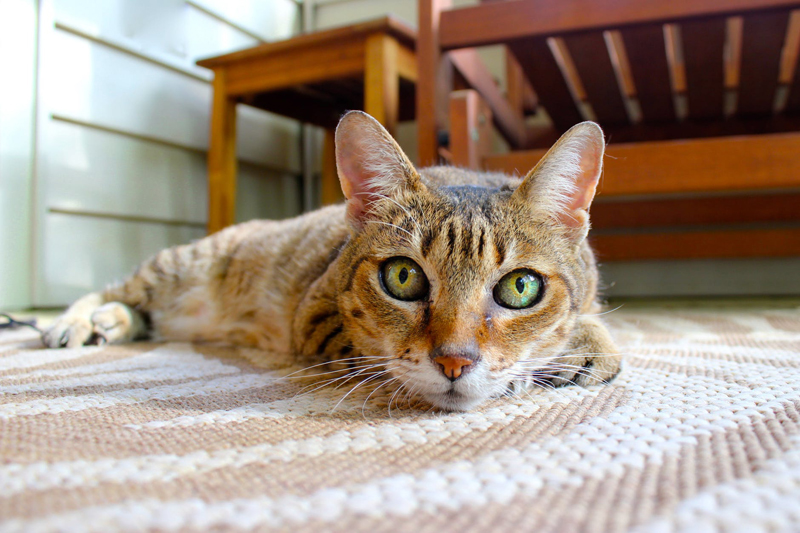Book Review - Rug Hooking

Rug Hooking has been around for centuries and became popular in America in the 1800’s. Carpeting was very expensive at the time. In an effort to bring color and warmth into their homes, rug hookers creatively used feed sacks for the backing, recycled clothing and a bent nail or fork to make rugs. Designs were simple, drawn on the feedsacks using charcoal. Homemade dyes were used to color fabrics.
In the mid 1800’s, a machinist, Edward Sands Frost got an idea as he was peddling his wares from house to house. He saw the homemade tools that rug hookers were using and the finished rugs. He started making hooks and than made stencils out of recycled tin which he used to draw patterns in ink on burlap. He sold the hooks and patterns door to door and his business was a huge success, changing the way rugs were hooked. As designs and standard patterns evolved, some of the unique primitive creativity of early rug hookers was lost.
Some forms of rugmaking are exact, requiring practice and perfection. We’ve learned from the charm of early American hooked rugs, there is no wrong or right when rug hooking primitive designs. It doesn’t require perfection, just a few tools and supplies and a little time and imagination.
Donna Lovelady’s book, "Rug Hooking for the First Time" is a great resource for primitive design inspiration and learning rug hooking. This book begins with a brief history of rug hooking and moves into explaining how to select backing fabric, tools required (rug hook and burling iron), frames and scissors. It includes information for selecting, cutting, preparing, dying and calculating how much wool you will need. For readers interested in cutting costs and recycling, Donna includes tips for finding and selecting used wool.
"Rug Hooking for the First Time" takes you step by step through the process of preparing fabric backing, hooking directions and finishing your project. The book not only includes primitive patterns and techniques, it also encourages and provides information for designing your own rug.
My favorite instructional books have lots of pictures illustrating step by step instructions and completed projects. This book is filled with pictures! I also like the fact that Donna focuses on techniques and patterns, such as how to make simple designs, letters, shapes, stars, hearts, faces, borders, floral designs, birds, animals…. and explains how to make and finish projects of different shapes and sizes, giving you the option to follow the patterns or use the techniques and patterns to create your own unique design.
I found Donna Lovelady’s book "Rug Hooking for the First Time" at my local library. It can also be found online and in some of your favorite book stores. If you are interested in rug hooking, I highly recommend checking out this book.
Buy Rug Hooking for the first time from Amazon.com.
In the mid 1800’s, a machinist, Edward Sands Frost got an idea as he was peddling his wares from house to house. He saw the homemade tools that rug hookers were using and the finished rugs. He started making hooks and than made stencils out of recycled tin which he used to draw patterns in ink on burlap. He sold the hooks and patterns door to door and his business was a huge success, changing the way rugs were hooked. As designs and standard patterns evolved, some of the unique primitive creativity of early rug hookers was lost.
Some forms of rugmaking are exact, requiring practice and perfection. We’ve learned from the charm of early American hooked rugs, there is no wrong or right when rug hooking primitive designs. It doesn’t require perfection, just a few tools and supplies and a little time and imagination.
Donna Lovelady’s book, "Rug Hooking for the First Time" is a great resource for primitive design inspiration and learning rug hooking. This book begins with a brief history of rug hooking and moves into explaining how to select backing fabric, tools required (rug hook and burling iron), frames and scissors. It includes information for selecting, cutting, preparing, dying and calculating how much wool you will need. For readers interested in cutting costs and recycling, Donna includes tips for finding and selecting used wool.
"Rug Hooking for the First Time" takes you step by step through the process of preparing fabric backing, hooking directions and finishing your project. The book not only includes primitive patterns and techniques, it also encourages and provides information for designing your own rug.
My favorite instructional books have lots of pictures illustrating step by step instructions and completed projects. This book is filled with pictures! I also like the fact that Donna focuses on techniques and patterns, such as how to make simple designs, letters, shapes, stars, hearts, faces, borders, floral designs, birds, animals…. and explains how to make and finish projects of different shapes and sizes, giving you the option to follow the patterns or use the techniques and patterns to create your own unique design.
I found Donna Lovelady’s book "Rug Hooking for the First Time" at my local library. It can also be found online and in some of your favorite book stores. If you are interested in rug hooking, I highly recommend checking out this book.
Buy Rug Hooking for the first time from Amazon.com.
This site needs an editor - click to learn more!
You Should Also Read:
Rug Hooking Learn At Home Series
Rug Hooking Frames
The Craft Of Hand Made Rugs
Related Articles
Editor's Picks Articles
Top Ten Articles
Previous Features
Site Map
Content copyright © 2023 by Christine Dux. All rights reserved.
This content was written by Christine Dux. If you wish to use this content in any manner, you need written permission. Contact
BellaOnline Administration
for details.


